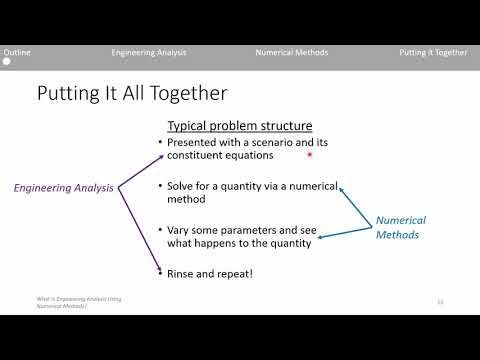ProModel Getting Started Tutorial
Summary
TLDRThis tutorial introduces ProModel, a discrete event simulation tool designed to predict complex systems by breaking them down into manageable components. Users learn to build a manufacturing model where raw materials are processed through various stages, from receiving to inspection. The video covers the creation of locations, entities, arrivals, and processing logic, including the implementation of resources to enhance system efficiency. It also explores scenario analysis with varying resource units to identify optimal configurations. ProModel serves as a powerful decision-making tool, offering insights into operational improvements in various industries.
Takeaways
- 😀 ProModel is a discrete event simulation tool used to predict and analyze complex systems.
- 🔧 The software allows users to break down systems into manageable steps and run experiments to evaluate proposed changes.
- 📹 For beginners, it's recommended to watch the quick start video before diving into ProModel tutorials.
- 🏭 This tutorial focuses on building a manufacturing model for producing cogs, detailing each step of the process.
- 📊 Users can import background graphics and customize their graphics library to enhance the visual layout of the simulation.
- 🔍 The creation of locations and entities is essential for representing different parts of the manufacturing process.
- 🔄 Arrivals and processing are crucial components; entities can arrive at specified intervals and be processed in various locations.
- ⚙️ Logic statements, such as wait and accumulate, are used to define processing times and conditions in the simulation.
- 👥 Resources can be added to the model to facilitate movement and processing of entities, helping to optimize system performance.
- 📈 By utilizing macros, users can easily experiment with different scenarios, such as varying the number of resources, to analyze their impact on system efficiency.
Q & A
What is ProModel, and how is it used?
-ProModel is a discrete event simulation tool that helps predict complex systems by breaking them down into individual steps and representing variability. It allows users to run experiments to assess the effectiveness of proposed changes.
What is the primary difference between ProModel and Process Simulator?
-While both ProModel and Process Simulator use the same simulation engine, ProModel is a standalone application with more advanced features, whereas Process Simulator is a plug-in for Microsoft Visio, utilizing its familiar interface.
What steps are involved in building a manufacturing model in ProModel?
-Building a manufacturing model involves importing layout graphics, creating locations and entities, setting up arrivals and processing logic, incorporating resources, defining path networks, and running simulations.
How can users customize their graphics library in ProModel?
-Users can customize the graphics library by accessing the Graphic Editor, where they can add, delete, or edit graphics. They can also import new graphics to suit their specific modeling needs.
What are entity spots, and why are they important?
-Entity spots are invisible locations where entities wait in a simulation. They help in tracking the number of entities present in various locations without cluttering the visual representation of the model.
How is processing logic defined for different locations in ProModel?
-Processing logic is defined by using wait statements, specifying processing times with distributions, and determining the behavior of entities as they move through various locations.
What role do resources play in the ProModel simulation?
-Resources, such as operators, can move entities around the system and assist in processing. They help optimize workflow and improve system efficiency, potentially acting as bottlenecks if not managed properly.
How can users analyze the results of a simulation in ProModel?
-Users can analyze simulation results by accessing the Output Viewer, where they can compare performance metrics like total exits and average time in the system for different scenarios.
What is the purpose of using macros in ProModel?
-Macros allow users to create scenario parameters, such as the number of resources, enabling them to run multiple simulations with varying configurations to assess their impact on system performance.
What should users consider when defining warm-up periods in a simulation?
-Warm-up periods are used to stabilize the simulation results, especially if the system starts with entities present. Users should ensure that warm-up periods are appropriate for the model's characteristics to obtain accurate statistics.
Outlines

This section is available to paid users only. Please upgrade to access this part.
Upgrade NowMindmap

This section is available to paid users only. Please upgrade to access this part.
Upgrade NowKeywords

This section is available to paid users only. Please upgrade to access this part.
Upgrade NowHighlights

This section is available to paid users only. Please upgrade to access this part.
Upgrade NowTranscripts

This section is available to paid users only. Please upgrade to access this part.
Upgrade NowBrowse More Related Video

Tutorial-15: Intro to RF System Design in SystemVue

IGCSE Computer Science 2023-25 - Topic 7: Video 2 - Computer Systems, Subsystems and Decomposition

How to Force Your Brain to Study (when you don't feel like it)

How to Build Reliable AI Agents in 2025

Problem Solve Like a Computer Programmer | Kyle Smyth | TEDxRPLCentralLibrary

What Is Engineering Analysis Using Numerical Methods?
5.0 / 5 (0 votes)